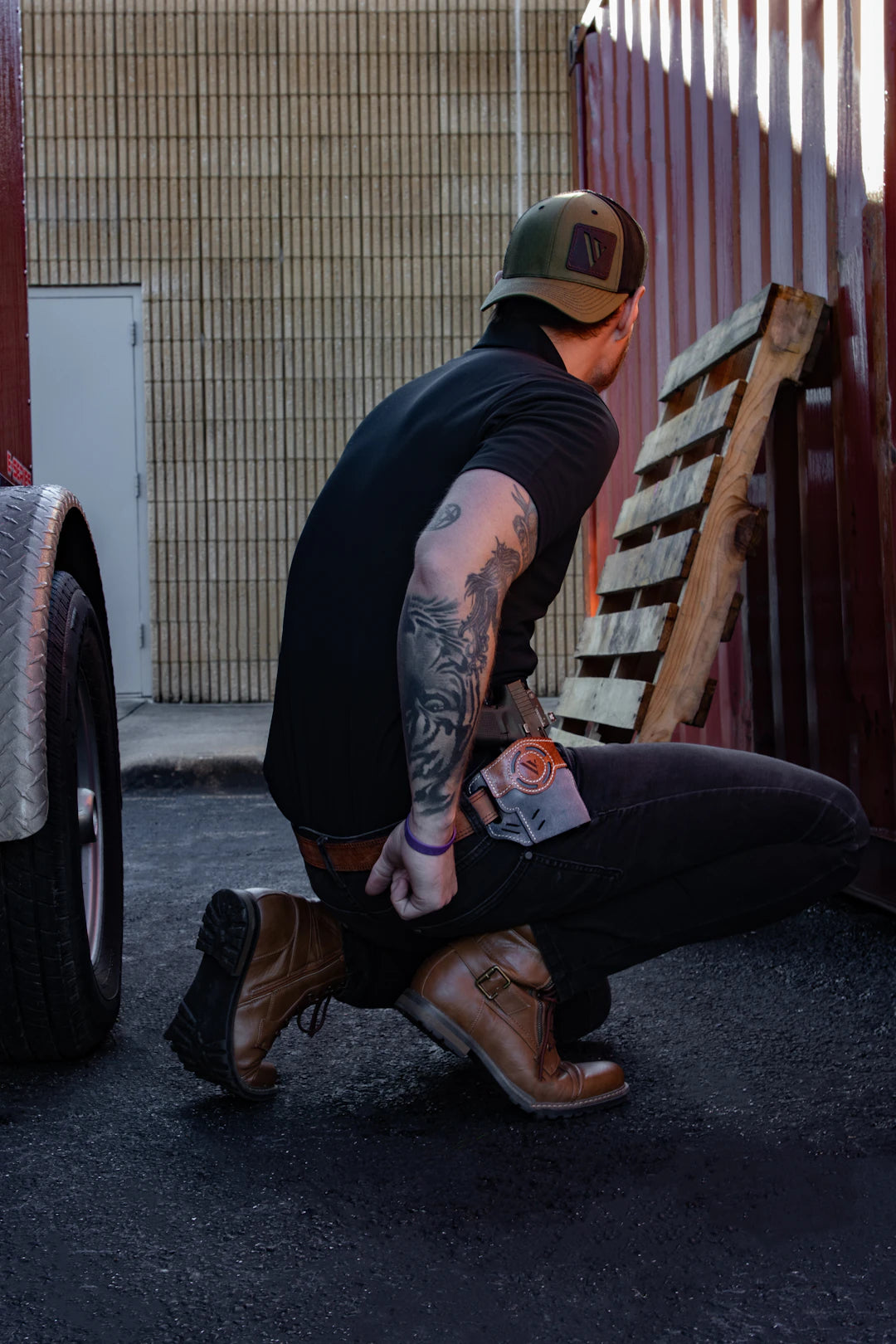Frequently Asked Questions
1. What is retention in holsters?
2. Why is retention important for safety?
3. What are the types of retention mechanisms for holsters?
4. How does material choice affect retention in holsters?
5. What should be considered for everyday carry (EDC) in holster selection?
When it comes to selecting the perfect holster, one of the most crucial aspects that often gets overlooked is retention. Retention not only ensures that your firearm remains secure but also affects your overall experience and performance. This article delves deep into the role of retention in holster selection, shedding light on important features and considerations that can aid you in making an informed choice. Specifically, we'll explore how retention can influence usability in the field and enhance your experience as a secure gun owner.
Understanding Retention in Holsters
Retention refers to the ability of a holster to keep your firearm securely in place under various conditions. In situations where quick access is necessary, it is essential that your holster allows for a fast, yet secure draw without compromising safety. The retention level of a holster can vary based on its design, materials, and mechanisms.
The Importance of Retention for Safety
First and foremost, retention is vital for safety reasons. A holster with inadequate retention can expose you and those around you to risk. Unintentional discharges, as a result of firearms slipping out, can lead to devastating accidents. A well-constructed holster will incorporate methods to secure the firearm yet enable easy access to it when necessary, striking a balance between safety and functionality.
Types of Retention Mechanisms
There are several types of retention mechanisms found in holsters. Below, we’ll outline some of the most common methods:
- Passive Retention: This relies on the holster's design and fit to keep the firearm securely in place. Common materials like Kydex or thermoplastics are often molded precisely to the gun's shape.
- Active Retention: These holsters incorporate additional features such as thumb breaks, straps, or mechanical locks that must be disengaged before drawing the weapon.
- Adjustable Retention: Some holsters allow you to customize the level of retention according to personal preference, often using screws or similar fasteners.
Understanding these different retention mechanisms can significantly aid you in making an informed decision when selecting a holster.
Retention and Accessibility: Finding the Balance
When selecting a holster, it's important to remember the importance of accessibility in relation to retention. An optimal holster should provide adequate retention without compromising the speed with which you can draw your firearm. This is where your individual needs and preferences play a significant role.
Situational Considerations
Your choice may vary depending on the scenarios in which you plan to carry your firearm. For example, about how you use an Organized Parts Tray may determine your retention preferences. If you’re engaged in activities that require running or bending, a higher retention level may be critical. Conversely, if your holster is for casual use, you might prefer a quicker access option with slightly lower retention. This trade-off is essential to assess in different environments.
Pocket Carry vs. OWB (Outside the Waistband)
Retention becomes even more significant when considering where you carry your holster. For pocket carry, holsters typically have a passive retention system that provides sufficient hold while allowing for a rapid draw. On the other hand, an OWB holster may utilize both active and passive retention systems, depending on whether you prioritize discretion, speed, or safety.
Material Selection and Its Impact on Retention
The choice of materials utilized in your holster can have a tremendous effect on retention. Various materials provide different levels of 'grippiness,' which can ultimately affect how securely your firearm fits in the holster.
Kydex vs. Leather
Kydex is a popular choice among gun owners due to its rigidity, which enables a snug fit. This material can be molded precisely to the contours of your firearm, providing considerable passive retention. Meanwhile, leather offers a more traditional aesthetic and tends to acclimate over time, providing an organic fit. However, as leather stretches, it may affect retention. Assessing these material differences is crucial in determining how secure and accessible your firearm will be.
Retention Levels and User Experience
High retention can enhance your own experience while carrying a firearm. A stable, secure holster allows you to perform activities without fear of your firearm dislodging. Engaging in physical activities, such as martial arts or tactical training, requires a holster that offers high retention.
Holster Wear Patterns
An important factor to consider is how holsters break in over time. Initial retention should be effective, but it's essential to monitor how it wears as you use your holster. Maintenance, proper storage, and avoiding excessive moisture can play a role in preserving retention longevity. Regularly inspecting your holster will ensure that it continues to perform as expected. This attention to detail heightens both security and your comfort level while carrying.
Retaining Comfort and Aesthetic Balance
While security is paramount, comfort and aesthetics should also not be compromised. An excessively rigid or bulky holster can significantly hinder access and wearing experience. Comfort plays a key role in how often you'll carry your firearm, and aesthetics can contribute to the overall appeal of your carry setup.
The Search for a Holster That Fits
It may take some experimentation to find a holster that fits perfectly and provides the right retention level. Consider testing various designs, such as hybrid holsters that pair leather with a more rigid material for balance. Seek out stores or local gun ranges that allow you to try different styles and models before buying.
The Everyday Carry (EDC) Considerations
Your EDC scenario should be a key factor in the decision-making process regarding retention in holster selection. Holsters used for everyday carry need to strike an ideal balance between securing your firearm and allowing quick access.
Evaluating Use Cases
When determining which holster works for you, contemplate your lifestyle. Will you be using it while commuting, running errands, or participating in activities such as hiking or target practice? Each scenario may demand variations in retention, so evaluating your use cases is indispensable.
Shooter Level and Training Influence
Your proficiency level as a shooter should also be considered. Novice shooters may prioritize retention more than seasoned individuals who have developed reflexes and draws through practice and training.
Training with Different Retention Levels
It's vital to train with your holster, practicing your draw techniques under various conditions. Start with a holster that has higher retention to ensure safety while becoming familiar with handling your firearm. Over time, consider transitioning to a holster suited for a quicker draw, helping you navigate through various scenarios as you become deft with your firearm handling.
Customizing Your Holster to Fit Your Needs
Customization can help enhance retention and comfort in your holster. Numerous companies and brands allow you to create a holster tailored specifically to your needs. Remember to discuss retention preferences when engaging with manufacturers.
The Role of Accessories
Handedly, accessories like belt clips, loops, or attachments can further play into how securely your holster retains your firearm. For example, a G-code attachment might allow you to customize your setup, improving accessibility while maintaining retention quality. Research different combinations of accessories to enhance your holster experience.
Incorporating Retention into Your Holster Selection Journey
Your journey toward selecting the ultimate holster needn’t be daunting. Following these guidelines will help you engage with retention concepts purposefully:
- Assess your carrying situation and prioritize safety.
- Understand the various retention mechanisms available.
- Choose suitable materials that align with your preferences.
- Consider your skill level and adjust training accordingly.
- Evaluate the importance of comfort and aesthetics.
Ultimately, the experience you derive from your holster will largely hinge upon how well you strategize your selection based on retention needs.
Unlocking the Best Holster Experience
Finding the perfect holster may require time, research, and effort, but understanding the role of retention enhances your overall experience as a responsible firearm owner. By giving this vital aspect the attention it deserves, you can enjoy the confidence of knowing your firearm is secure, while also maintaining efficiency and accessibility. Take your time to explore your options, consult with experts, and test various holster styles. In doing so, you will discover not just a holster that meets your needs, but one that helps you feel empowered in your everyday life!

